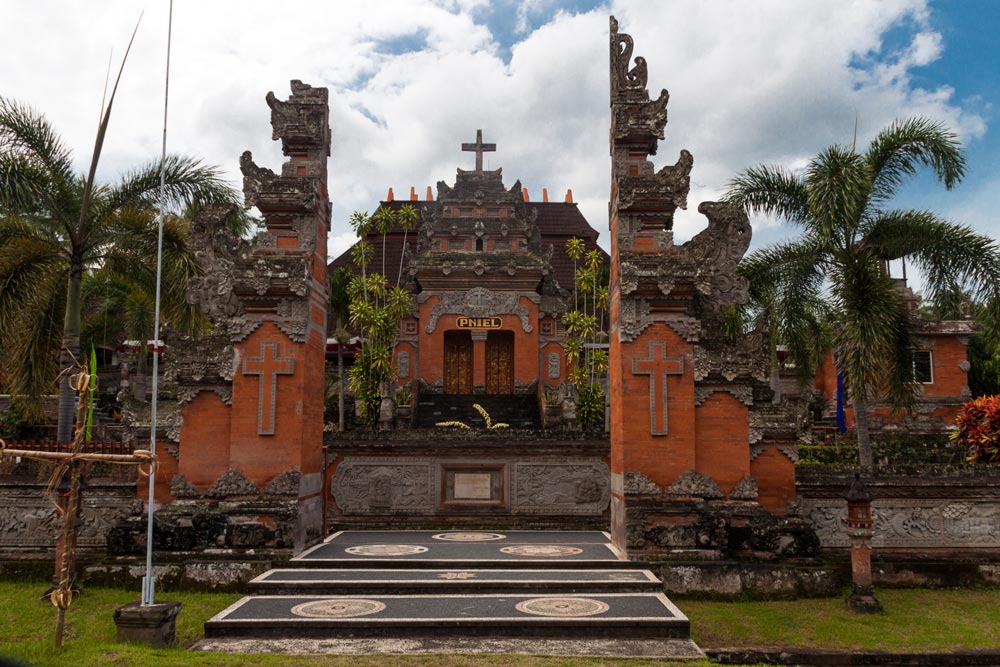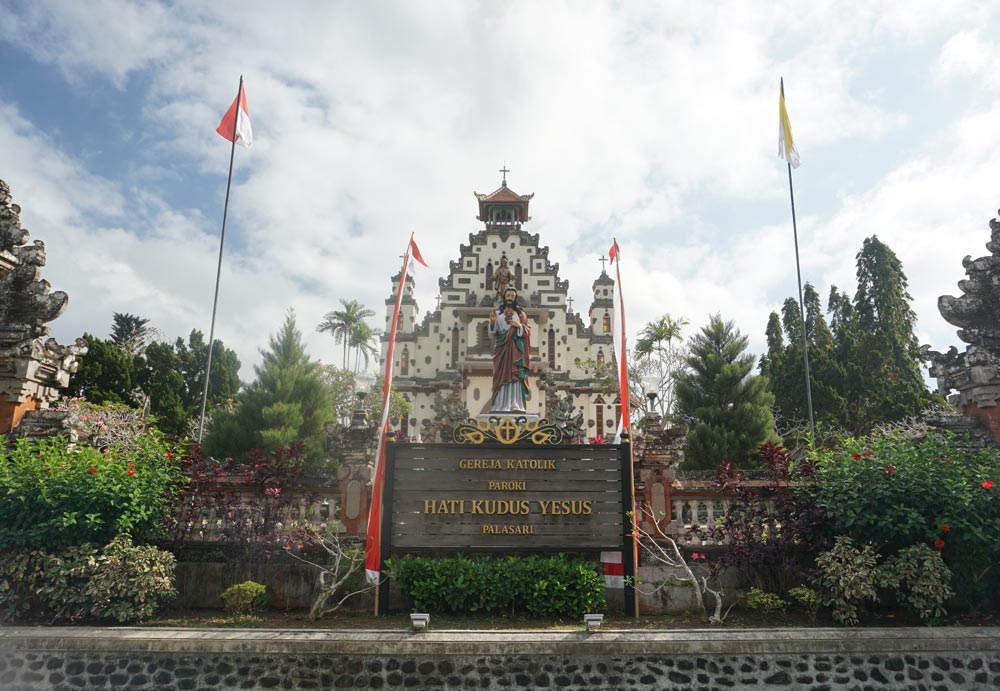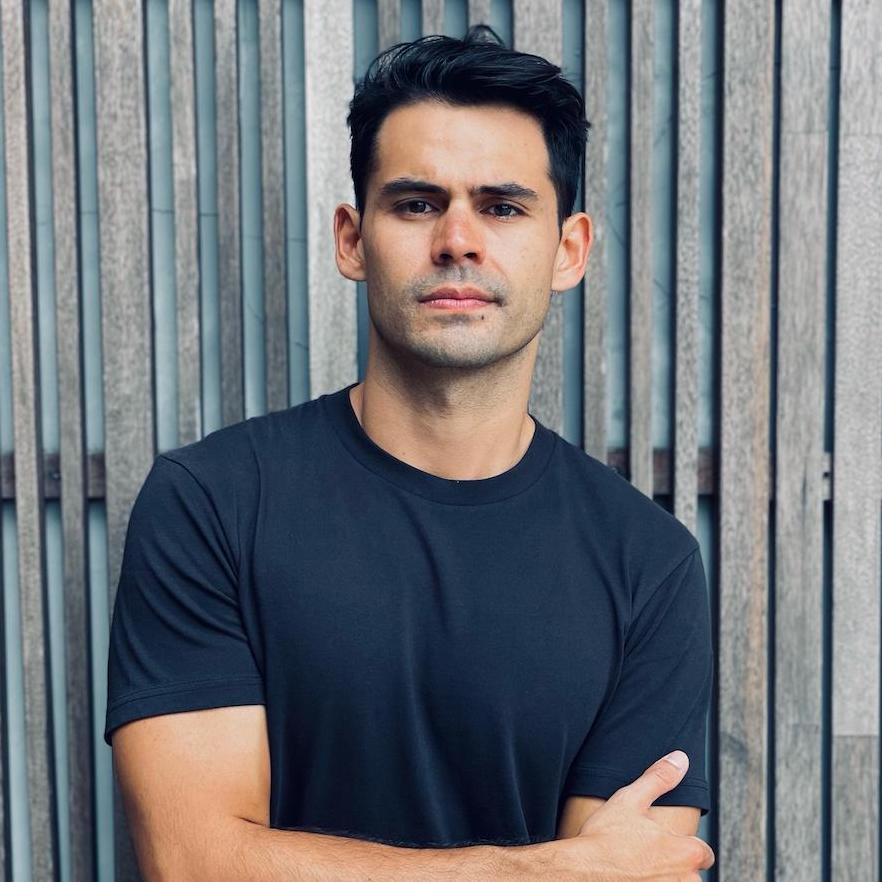
Balinese Hinduism is central to the island’s identity. Rites and rituals colour everyday life in Bali, creating a vibrant living culture that captures the imagination of visitors. However, not all Balinese are Hindu: there are communities of Christian, Muslim and Buddhist Balinese, who at face value appear just like their Hindu neighbours but in fact, ascribe to a different faith.
North of Canggu, around the areas of Buduk, Dalang and Padonan, churches and Cathedrals line the road. Blending into their milieu, these places of worship feature aspects of Balinese architecture, showcasing a merge of faith and culture.
Christianity has never had a strong foothold in Indonesian history. Other faiths like Buddhism, Hinduism and of course Islam spread throughout the archipelago, in that order, through empires and kingdoms. Noteworthy introductions to Christianity came through trade and colonisation, first from the Portuguese at the start of the 16th century, then from the incumbent Dutch at the end of the century.
At first, the colonising Dutch banned all missionaries from working within the archipelago. It wasn’t until 1854, when the Governor General of the region opened the region to missionary work, allowing Catholics to work in Flores and beyond, and the Protestants the rest of the Lesser Sunda Islands, including Bali.
Missionary work was fruitless at the beginning. The Dutch Utrecht Missionary Society sent missionaries to the island with often frustrating results. One account shares the story of Reverend van Eck, the second missionary to the island, who managed to convert one Balinese, his servant, a Gusti Wayang Nurat Karangasem turned ‘Nicodemus’. The singular convert was preached to by van Eck and another missionary, Reverend de Vroom. Societal pressure mounted on poor Nicodemus, who later had de Vroom murdered, leading to his own execution. An abysmal start indeed.
In 1927, the Dutch allowed the Chinese Missionary Alliance to operate on Bali; and then in 1931 eleven new Balinese Christians were baptised by the Chinese evangelist, Tsang To Han (though this story alone is said to be riddled with drama). This is often referred to as the ‘milestone’ in the birth of the Balinese Church. Tsang was later deported in 1933 for his fervent missionary style, but had already converted at least 300 Balinese Hindus before he was shipped away.

Colonial officials thus allowed the Dutch Reformed Church to enter Bali so that these 300 Balinese Christians could be ministered to. This eventually led to the creation of the Gereja Kristen Protestan di Bali (GKPB) which became a legal entity in 1949. By this point, Indonesia had declared independence and under the new national principles of ‘Pancasila’, all Indonesians were allowed the freedom of faith — that is, out of the five monotheistic faiths officially recognised under these principles i.e. Islam, Hinduism, Buddhism, Christianity and Confucianism.
According to a 2010 census (Badan Pusat Statistik Provinsi Bali), there are now 31,397 Protestants in Bali, making up only 0.8% of the entire population (3,890,757 at the time). This shows a considerable growth in the community.
Despite its growth, Balinese Christians remain a small minority on the island and indeed have their identities questioned occasionally, but more so out of curiosity rather than prejudice. With Hinduism so intertwined with the idea of being Balinese, how do the Balinese Christians see themselves? Does their different religion mean that their ‘Balineseness’ is therefore diluted?
“I still strongly identify as Balinese,” I Made Gidiyon shares with NOW! Bali, a resident of Banjar Uma Candi, Buduk. His name perfectly represents that fusion of faith and culture, and his two pillars of identity: Made, the Balinese birth order name; and Gidiyon, a derivative of Gideon, a character in the Bible’s Old Testament. He continues this tradition with his own children, giving them all birth order names as an ode to their Balinese heritage.


Very little about Gidiyon, his family or even the whole community would suggest that they are “non-Balinese”. Perhaps only if asked directly what his religion is would you learn that he is not Hindu. Still, in his Christian-majority neighbourhood, the system of the banjar continues, the village gathering where the community take part to help one another or organise locally important matters.
“When we hear the call of the kul-kul drum, we will gather like all Balinese do. It might be to pay respects to a neighbour that has passed away, for example. We will go to their home no matter what religion they are.”
Currently, the head of the banjar is Protestant, but in the past the head has been Hindu and also Catholic. They will gather for practical matters, but when it comes to each religion’s own celebrations or auspicious days, they will do this separately. Even religion-based community activities are normally done only by those who ascribe to that faith, such as the creation of the Ogoh-Ogoh, giant monstrous effigies that are paraded on the streets on the eve of Nyepi, the day of silence. “Normally this would be the Hindu youth who take part in this, but still they are open for any of the young members of the community to join if they wish”, says Gidiyon as he hands over a Balinese language Bible, titled Cakepan Suci.
A fun fact regarding the Bible in Balinese: When the Protestant missionaries first came to Bali, their first task was to translate the holy book into the local dialect. They struggled to find a term that could reflect the concept of a single, almighty god. They settled for Sang Hyang Widi. This was in turn adopted by the Balinese Hindu after Indonesian independence, as they fought to prove how their faith was indeed monotheistic. The pantheon of Balinese Hindu gods are considered manifestations of a single almighty god, termed Sang Hyang Widi Wasa, borrowing from the Protestant’s initial translation.

Across the island, churches and cathedrals have taken on Balinese form. In West Bali, for example the villages of Palasari and Blimbingsari are uniquely Christian hamlets whose places of worship have adopted vernacular architecture and Balinese styles. The Catholic Palasari is breathtaking, with its cathedral set on the village’s town square. The architecture is Gothic but showcases Balinese touches in the spires which resemble the meru (multi-tiered shrine) of a Hindu temple, and features a façade resembling the staggered structure of a gapura temple gate. Some 100 metres away from the church is Goa Maria, or a Mary’s Grotto, a site of pilgrimage overlooking the greenery of the area’s surrounding hillsides.
The nearby Blimbingsari is home to Bali’s biggest Christian community. The local church displays distinct Balinese features. Instead of a church bell, there’s a Balinese kulkul (wooden calling drum) like those in a Hindu temple and the entrance is through a gapura gate.
This ‘Balinisation’ of the church is likely to be a consequence of the vision of a previous director of the GKPB, Dr I Wayan Mastra. “Dr Mastra is a firm believer in a contextualised service. He feels that a conversion to his church should be a religious conversion, not a cultural conversion”, Fred B. Eiseman, Jr., (Sekala and Niskala, 1990).
This was best expressed by Fred B. Eiseman Jr., “the various groups of non-Hindu faithful in Bali are extremely small minorities on an island-wide basis, each is concentrated in a few communities where their members are the majority. This minimises chances of discrimination or isolation… thus they are able to live happily with their Hindu neighbours. etc.”
Come Christmastime, some interesting traditions take place. Villagers of Palasari and Blimbingsari head to church in their Balinese attire, they sing hymns to the gamelan orchestra and serve Balinese food (the famous Babi Guling included), and traditional Balinese dancing is also performed. So, it clears that faith runs separate from identity,







